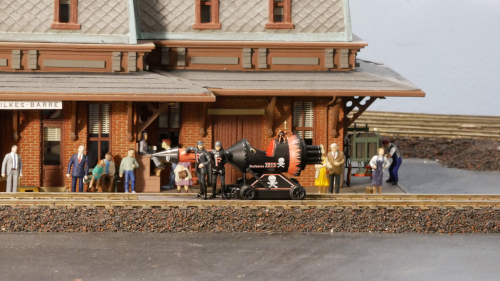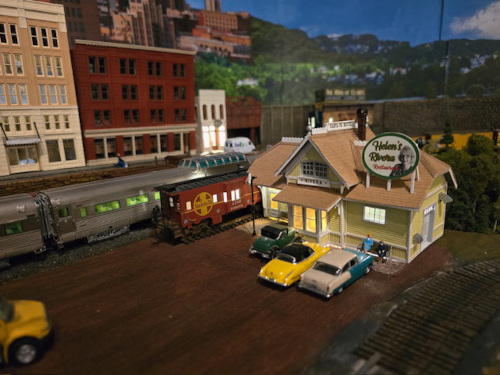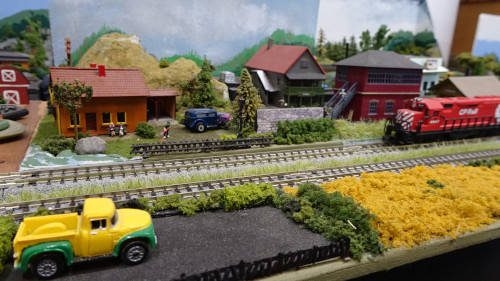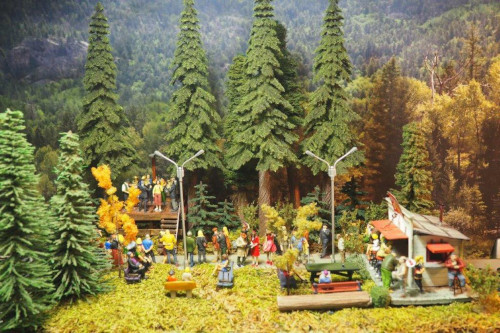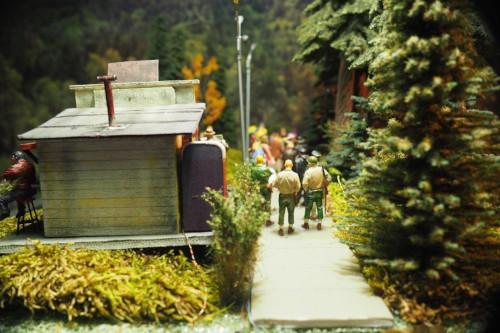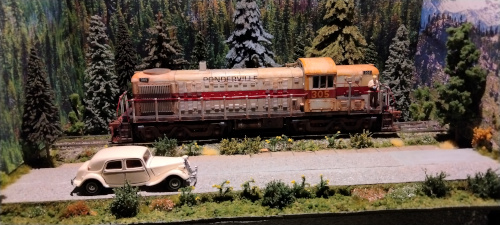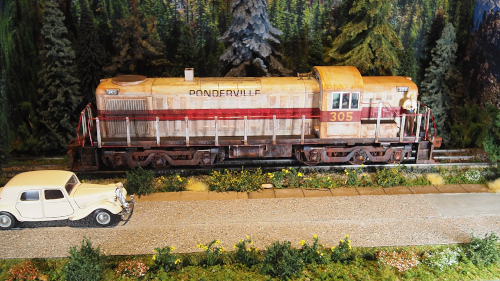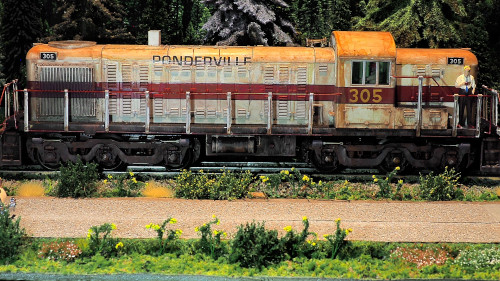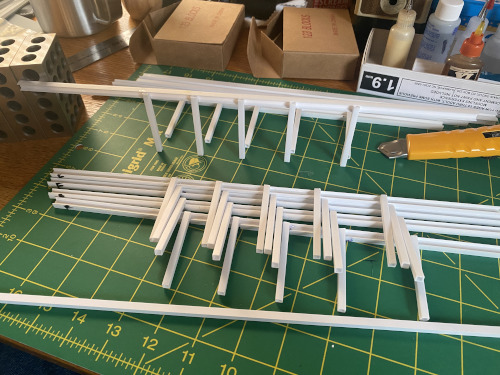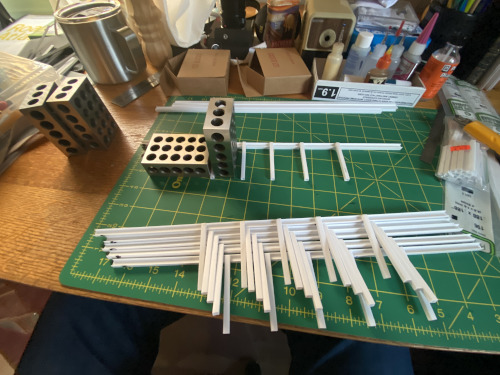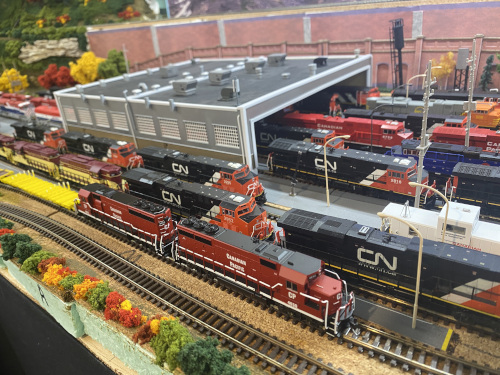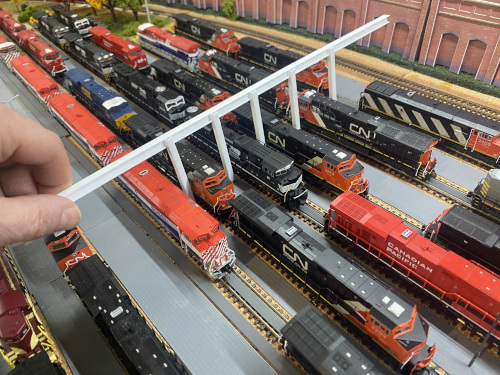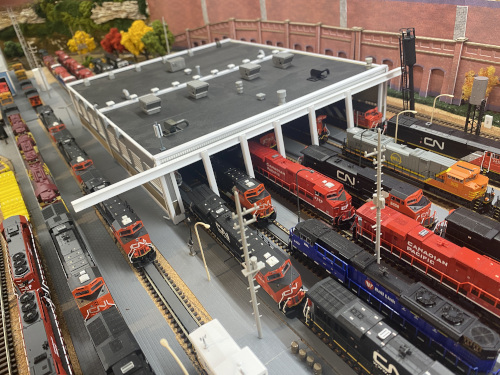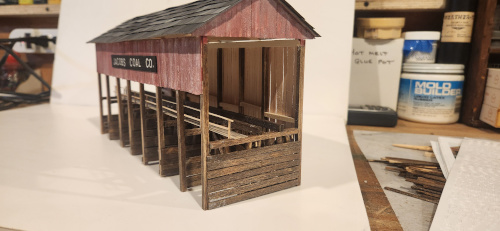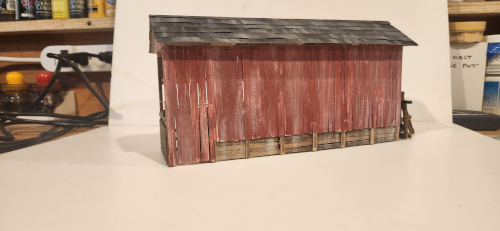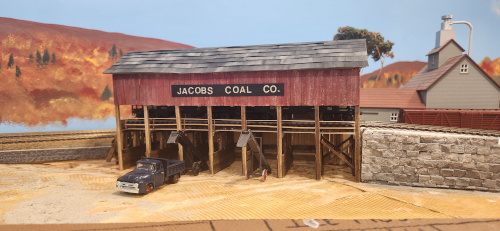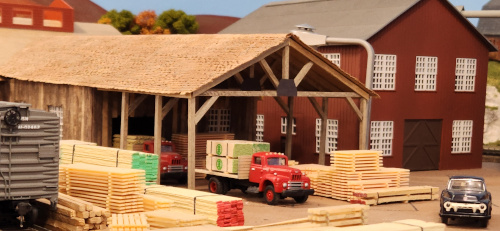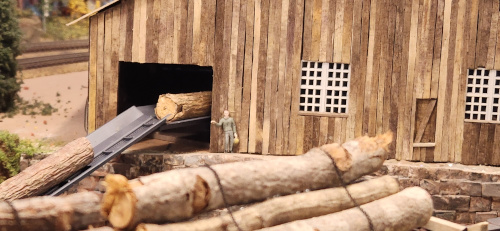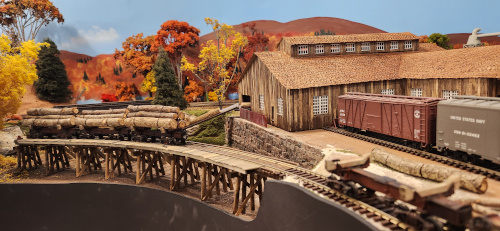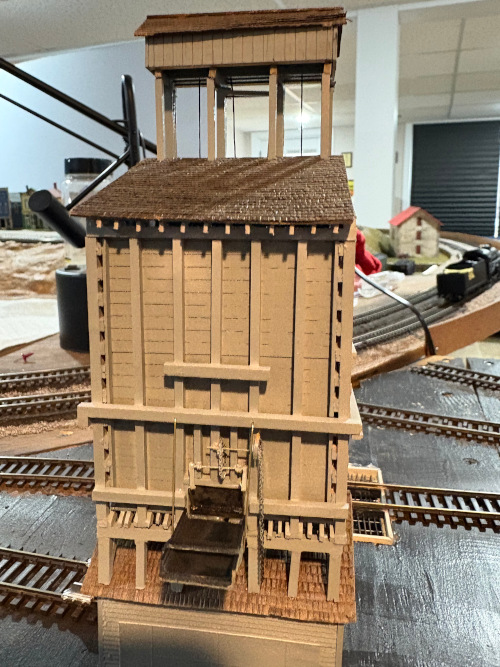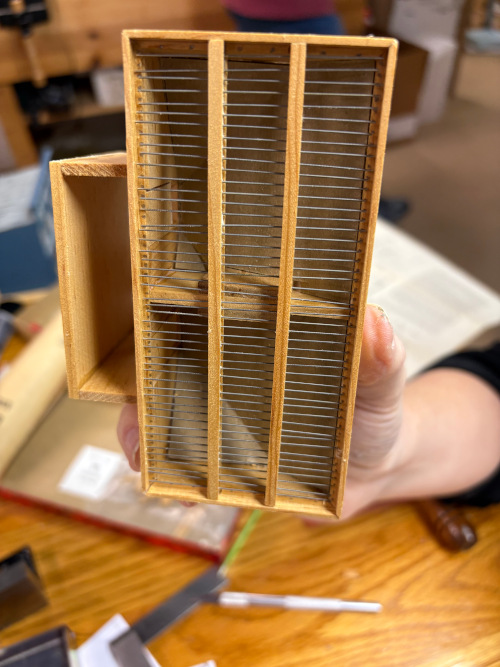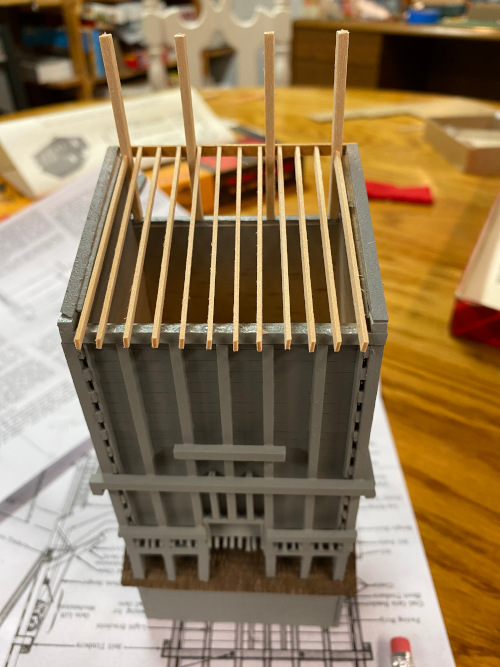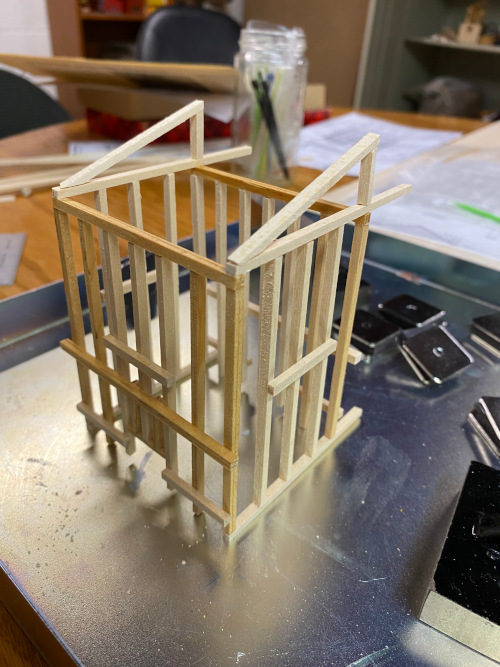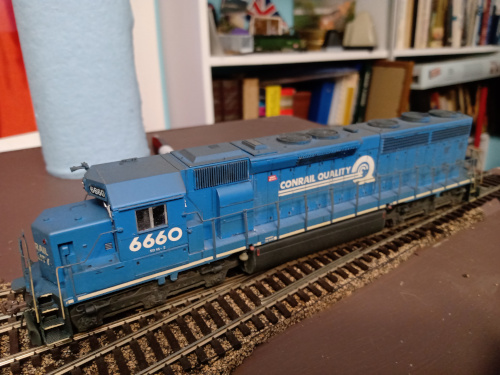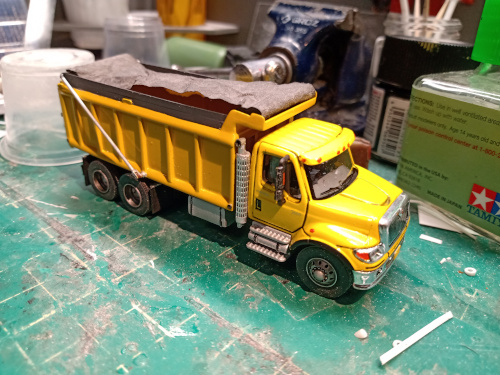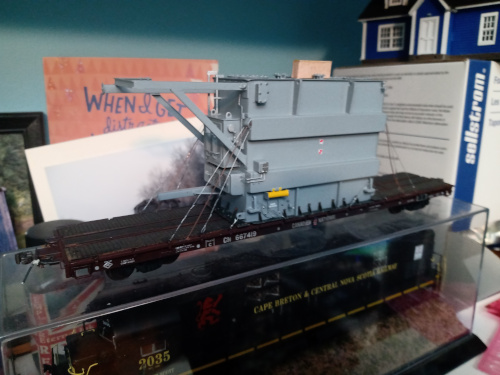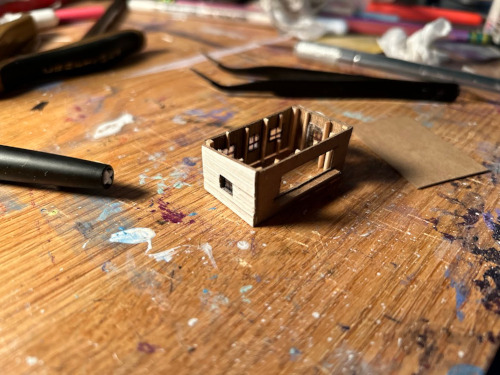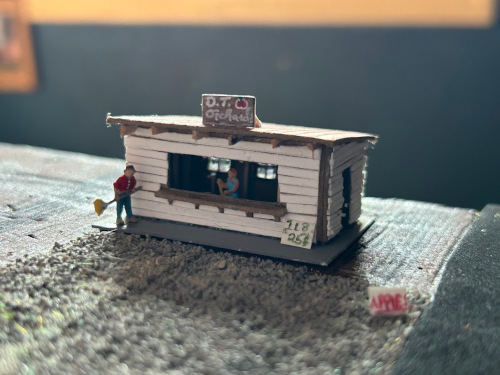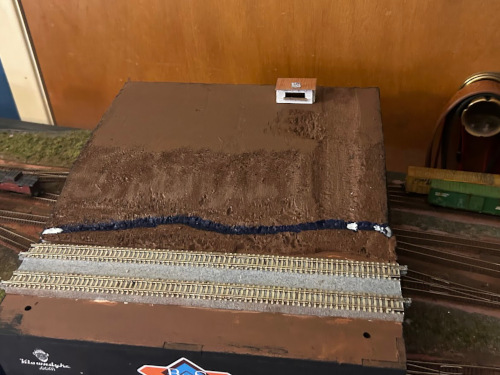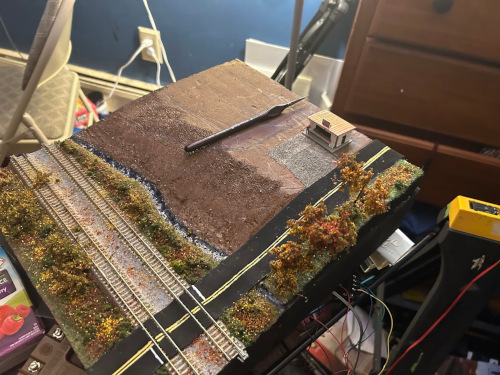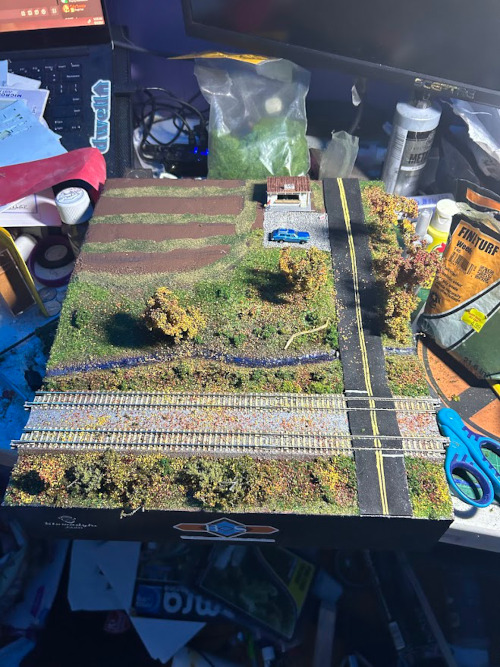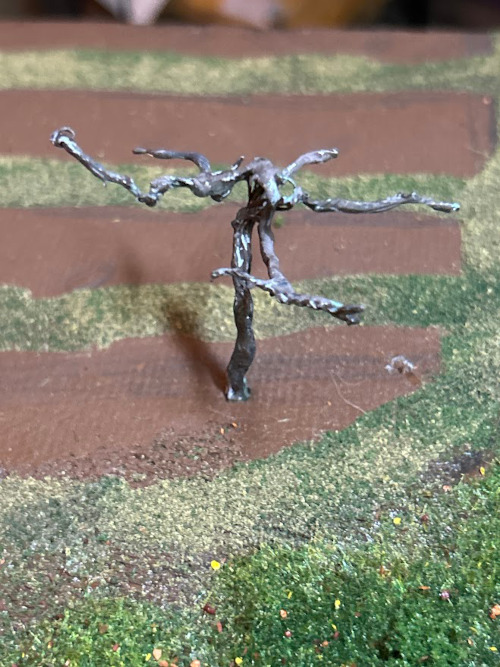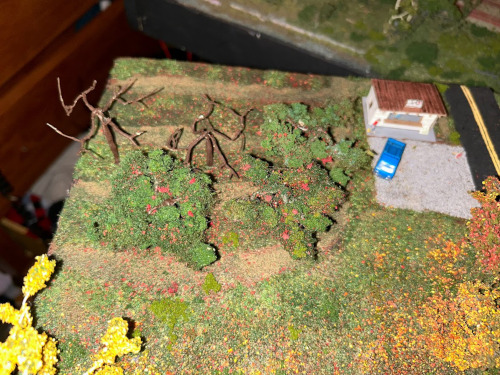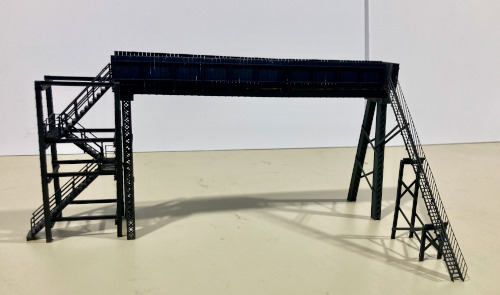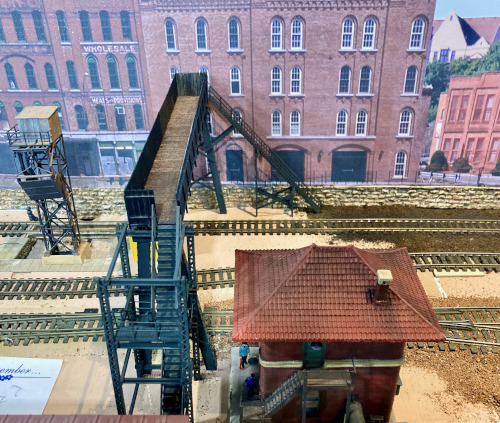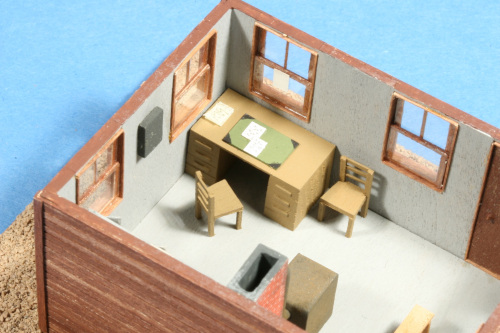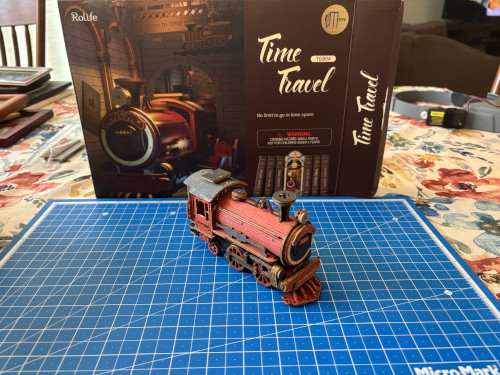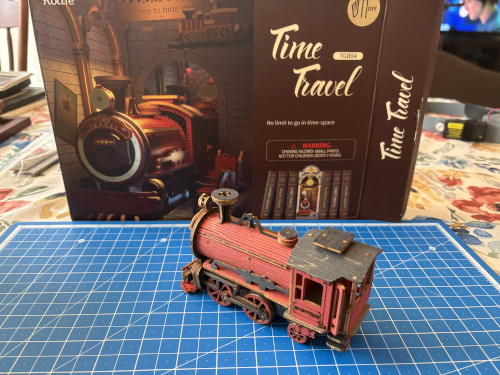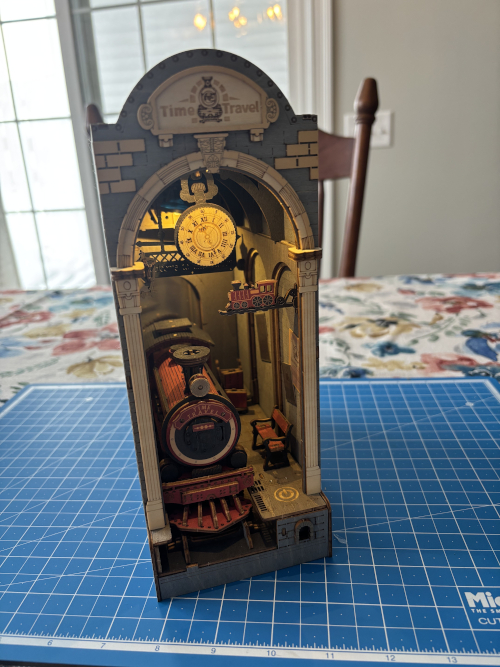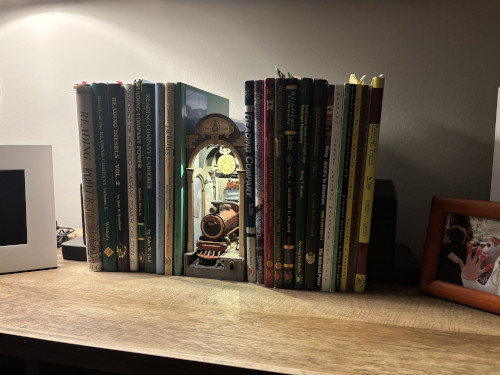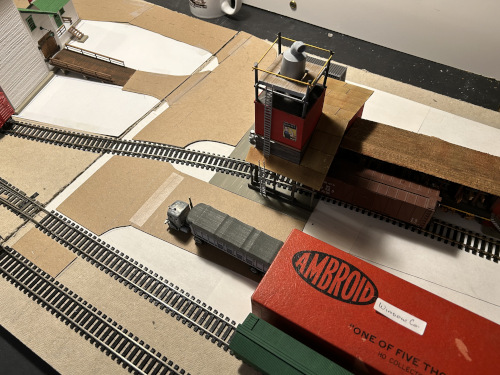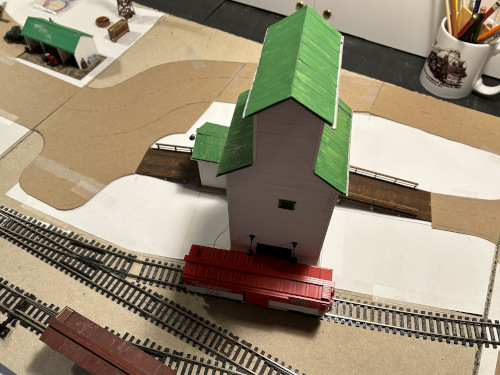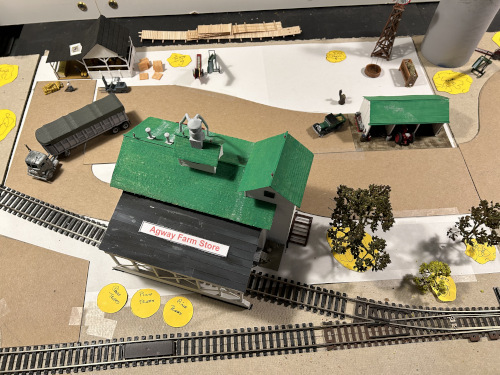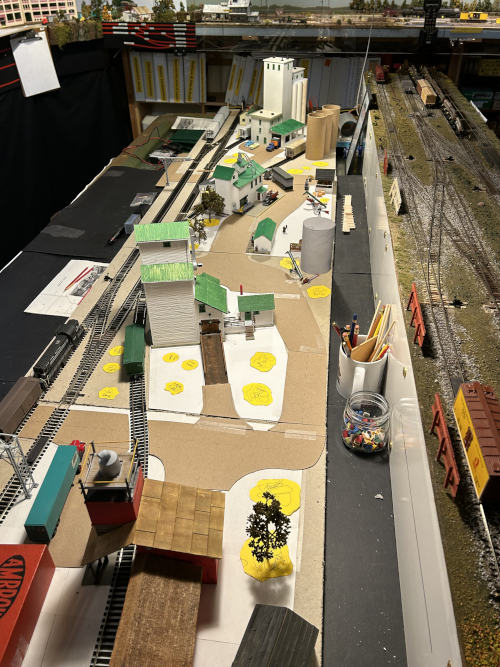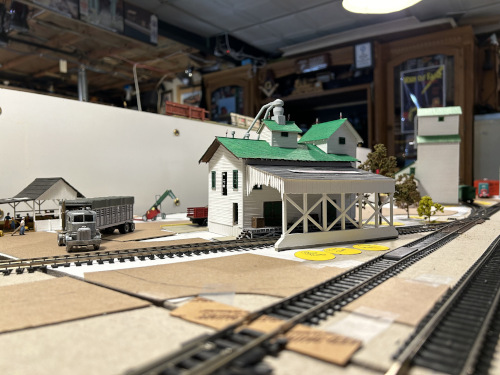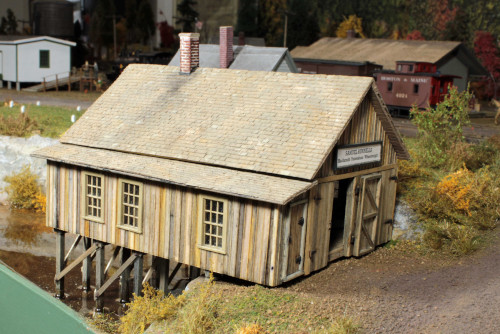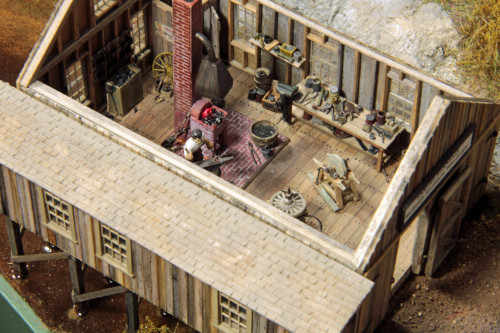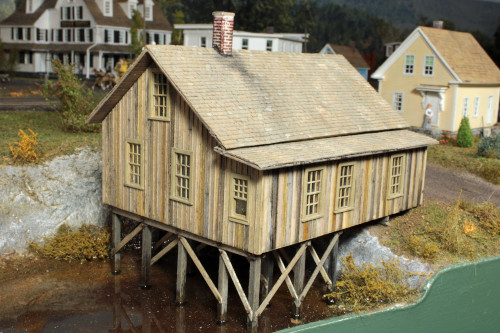Model Showcase
Do you have a project you have been working on and would like to showcase it here? Email Us
Click on any of the images below to open a full size copy. You can also use the + sign on the left to open a menu to jump to a specific entry. Thank you to all those that submitted models into our model showcase. Enjoy!
Chuck Diljak, MMR
Scale: HO
Model: Professor Fake's Rocket Sled by Inter-Action Hobbies
If you've ever seen the movie, "The Great Race" starring Tony Curtis, Jack Lemon, and Natalie Wood, you will have seen Professor Fate and his Rocket Sled.
The Great Race (1965)
Darryl Jacobs, owner of Inter-Action Hobbies and a sponsor of NERx has produced a 3D model of it, but calls it "Professor Fake's Rocket Sled." The kit comes with the sled and
two versions of the figures, sitting or standing.
The kit did not come with decals. I created the artwork, printed the decals, and gave the artwork to Darryl to produce for this kit someday.
https://www.interactionhobbies.com/HO-Scale-Kit-Professor-Fake’s-Rocket-Sled_p_188.html
I'll find a place for it on the layout so it can be "discovered" by visitors.
Chris Carfaro
Scale: HO
Catenary Maintenance Car for his freelanced traction railroad, the
Northcoast Electric. Chris custom painted and added details to a modified Bachmann gas-electric “doodlebug”
The platform raises and lowers with a servo mechanism and the welder will arc and make sounds activated by function outputs on an ESU Loksound decoder.
Paul Dexter
Division : HUB
Scale : HO
On his HO freelanced layout, Paul repurposed this ancient HSM Model cardboard kit of the historic Rivera Station (CA) into a track-side restaurant by modifying the footprint,
replacing the windows and doors with appropriate Tichy Products, adding interior lighting and adding an ATSF caboose dining room. The sign was custom crafted by his friend,
Mike Tylick, MMR #2 which includes a picture of his wife, Helen – she loves it !
John Becker
Division : Lakeshores
Scale: N
N-scale T-Trak diorama. The design and structures and detail were 'free-form'. John constructed and arranged this diorama to represent a prototypical railside scene.
This piece is an integral part of his home TTRAK layout.
Ted DiMone
Division : Little Rhody
Scale : O
Andora Forest is in the Pyrenees Mountains, form the natural border between France and Spain. The range stretches from the Atlantic Ocean to the Mediterranean Sea and is known
as Les Pyrénées in France and Los Pireneos in Spain. Andora Forest, located in Northern Spain, on the Northwestern boarder of France. During WW2, The US Army, US Naval
Intelligence, working with the French Resistance had a top-secret radio interception unit listening to the German Army and their plans to infiltrate areas in France, Spain,
and Great Britain. Many battles were won by the allies as they knew ahead of time what was planned by the German Army.
This is a 1/48 scale model of a festival in one of the Andora parks with in the Pireneos Mountains.
Most figures are from model-U, Great Britain, [hand painted] yours truly. Trees are from grand central Gems, and Scenic Express kits. Streetlights are from, We Honest, and
Evans Designs..
The last of the Alco RS-4 s. Sold to the Ponderville Northern Atlantic RW, from the Utha RR. The PNARW runs from New London to Nova Scotia, On now Amtrak, old NYC Hudson
lines North. It runs round trip once per day in spring, summer, and fall. It is referred to as the most northern, eastern scenic route to Thunder Bay, Nova scotia vacation
resorts, casinos, and hotels.
Model is a MTH O Scale ALCO RS-4
Weathered with acrylic washes, and Pan Pastels, A/I.
Paul Simone
Division : HUB
Scale : N
Paul retired during COVID and has been fortunate to be able to build what is rapidly becoming his dream layout. It is a 9x9 double deck N scale DCC layout with an open mountain
helix to get to the upper deck. A layout this size takes ages to build and complete as there are so many aspects to the build. There are 12 protected zones and he uses NCE
ProCab system to run it all. There are several hundred pieces of rolling stock, about 70 locomotives on the layout, multiple yards and industries, and at a scale 25mph it takes
approximately 18 minutes to complete a circuit.
Paul chose to model a freelance Canadian layout as it offers a huge variety of settings or scenes to model: Mountains, yards, grain industries, passenger service, cities and
towns, and more. The railroads represented here include Canadian National, Canadian Pacific, BCR, THB and a few cross border Canadian friends including Guilford, NS, CSX, MRL
and others. There is so much good product right now from Kato, Atlas, Prairie Shadows and Rapido spanning the 1950s to the present that it’s hard for Paul to stay focused on one era!
Also, a layout this size affords the ability to find interesting ways to hold his interest as there is so much to do, whether it be scenery, ballasting, wiring, track laying,
backdrops, urban planning, structures and more.
This structure project pictured here is in many ways the centerpiece of the layout: a modern diesel service facility. Paul kitbashed together two Walthers warehouse kits to form
the basis of the facility. The yard contains maintenance services, a caboose track, fueling services and repair capability. Having formed the basis of the main structure
(there are a few ancillary buildings as well), He is now working on building the interior of the main service facility. The building exterior will remain removable to expose
the interior which is being scratch built with Evergreen and Plastruct H, L and truss girders. It will have lighting, work platforms, workers, tools, supplies and more.
Paul is using 1-2-3 blocks to help set everything square around the 6 track facility including the main support girders. He expects this particular piece and interior will take
at least a couple more months to complete.
Kyle LeBlanc
Division :
Scale : HO
Jacobs Coal Company is a scratch built building in HO scale. Kyle got his inspiration from a photo of a model built by Samuel Parker in a Walthers Catalog.
The White Mountain Lumber Company is a modified version of the Walther's Mountain Lumber Company kit in HO scale. Kyle sheathed the structure with real wood an applied
Campbell Shingles to the roof. The trestle with the log cars is scratch built.
Mark Moritz
Mark needed a coaling station for the engine service facility on his model railroad and decided to build a Campbell kit. It took him about a year
to do because it was so complex Mark had to take breaks so as not to become discouraged. The kit was a literal “box of sticks’ which builds into a
model of the coaling station at either Durango or Chama, Colorado. Everything about it was “old-school”. There were no laser cut pieces. In
addition to the coaling station itself, there is a coal unloading pit which required construction with many pieces of wire. The entire project was
one Mark will remember for a long time.
Will Lawrence
Will has been working on several projects lately.
The first image of Conrail 6660 is an Athearn Genesis SD45-2 shell with Cannon cab, modified fans, and new wire handrails using Athearn stanchions.
It rides on a Kato SD40-2 chassis with added details and an Athearn 4000-gallon fuel tank.
This Boley dump truck in the second image received a scratchbuilt dump body with retractable load cover, new headlights, paint, and weathering.
The final image of CN 667419 is an Intermountain 60-foot flatcar with a transformer load scratchbuilt from Evergreen styrene and secured using
scratchbuilt styrene braces, wire stabilizing rods, and E-Z Line tie downs. Paint by Vallejo and Tamiya, decals by Highball Graphics.
Dennis Colucci
Dennis has been working on a T-Trak Module of an apple orchard he built along with his girlfriend, Theresa Mark. They worked together to build the
module kit from Klawndykes, design the scene and scratch build the road side farm stand. He then worked to build the topography from foam, add the
scenic elements, and build the apple trees from 28 gauge jewelry wire, fiber puffs, and ground foam. This is his first T-trak module, and he is
quite pleased with it from start to finish.
Ed O'Rourke, MMR
Scratch-built model of the foot bridge at the West end of New Haven Station. The steel girders and fencing are Central Valley products, the steps are
Tichy. Modeled from a few very indistinct photos, scaled to fit the space. The original spanned about 5 or 6 tracks. The structure was steel, but the
walkway and fencing were wood, due to the 11,000 volt AC catenary below it. The pagoda roof tower is a plaster model, probably from Railway Design
Associates, and the ash hoist in the background is a Walthers product.
James Whatley, MMR
This model of a yardmen’s shanty was scratchbuilt in HO scale by James Whatley, MMR.
Field measurements and photographs of the prototype, which used to be located in the Canadian National Railways Rockingham Yard in Halifax,
Nova Scotia, were used to make a drawing. Details of this process are included in James’ April, 2024 NMRAx presentation “Update on Photo
Interpretation for Model Makers”.
The model features board-by-board construction. Lengths of stripwood were lightly sanded to remove any fuzz and were then pre-stained with thinned
Floquil Box Car Red by drawing them through a small cotton rag. The double-hung window panes were cut from 0.005” microscope slide cover glass using
a diamond-tipped scriber. The shingles are paper lightly sprayed from a distance with black and dark grey paint. Once dry, tabs were cut into the
edge of the sheet at 12” intervals and then a 12” strip was sliced off. After application, the cut shingle edges were lightly sprayed dark grey by
aiming the airbrush upwards parallel to the roof. The remains of a broken roof sign were then added. The lost time accident safety sign on the door
was made using a computer and laser printer. The oil tank is cardstock, wrapped over wood sanded to the required shape, with added wire details.
Interior details were made from bits of wood, cardstock and paper, including the desk, chairs and space heater. The chimney is brick paper enhanced
with a wash and the stovepipe is a piece of solder. Note the key cabinet by the desk. The typical safety and other notices were made from tiny
pieces of tissue paper cut to 8-1/2” x 11” in HO.
Dave Durr
Sometimes family gifts us with railroad items that don’t exactly fit our scale, era, prototype, etc. Nevertheless, they are a good diversion, plus
we don’t want to put them on a shelf and seem unappreciative. Here’s a laser-cut wood kit that Dave received this past Christmas. It is not as
precise as our craftsman kits, but surely good for learning some of the techniques involved. It was Dave's first. Dave said "It’s a fun little
project that I probably wouldn’t have picked out myself."
Jim DeMarco, MMR
The Buffalo & Rochester Railroad
What's on my work bench? Four new HO 24" X 23" dioramas using 4 Different Kits.
Number 1 is a Fine Scale Miniature Kit-185 Crocker Brothers Co, with a siding track converted to an Agway's Farm Store. The store will supply farm equipment and feed for the farmers and the public.
Number 2 Diorama is a Campbell Grain Elevator Kit # 1795 with a 30,000 bushel elevator used for grinding grains for companies like Agway, horse farmers and dairy farmers.
Number 3 Diorama kit is a Campbell Kit # 417 Sash-Window Co. With 1 siding for incoming lumber. The window manufacturing plant receives and ships goods off the main line.
Number 4 Diorama is a Big Grain Elevator by Suncoast Models set up with Incoming and outgoing corn, wheat and beans by rail and trucking to big grain milling companies.
All the track is 24"long and 2" off the front of the dioramas .The second track is 2 1/2 " center to center run parallel with two crossovers outside to inside track.
4 Dioramas
- Agway siding can hold 5 cars, The Big Elevator can hold 5 cars.
- The Campbell elevator can hold 1 car, The Sash and Window can hold 2 cars.
- The ends of the inside crossovers can hold 4 cars.
- The ends of the outside crossovers can hold 6 cars.
Rich Breton
Division: Seacoast
Scale: HO
Scratch Built blacksmith shop for Heritage Park Railroad Museum 1909 B&M layout. The model has 797 parts, with only 17 commercial parts. It was
modeled to include all the interior details typical of a turn of the century blacksmith shop, with working door hinges, 40+ handmade horseshoes,
scratchbuilt post vice, treadle powered grinder, and working forge light. Building has removable roof for visitors to view interior details, full
framed interior walls and floor, and post supports installed on the waterway to match the prototype.
Model can be seen during the Concord Flyer NER 2025 Convention in September..

